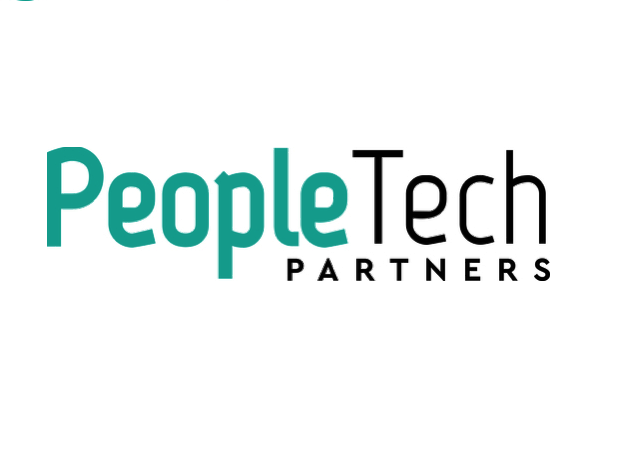Most growing organizations claim to want to innovate. They recognize that to attract and retain top talent, stay competitive, and grow the business, they must develop creative skills and behaviors that transform into commercial value. A recent survey of over 1500 CEOs proclaimed that creativity is the top leadership skill. But studies also reveal that innovative cultures are more likely to lead to employee burnout. By applying the right practices, creativity cultures have the power to unlock higher performance and wellbeing.
By: Anne Jacoby, PeopleTech Advisor and founder and CEO of Spring Street Solutions
Imagine for a moment that your high-growth company has hit a rough patch. While still acknowledging the need to innovate, fear of failure has crept in, and your growth rate has slowed. What felt effortless in the early days of building the business now seems challenging. With increased competition, resources slashed, and budgets tightening, managers start to ramp up pressure on their teams. Employees are consistently working overtime, taking on workloads normally scoped for two, sometimes three people. Soon, there’s a spike in attrition, absenteeism, and disengagement.
Why Do Innovative Companies Often Lead Employees to Burnout?
It’s a common challenge. Startups—or organizations experiencing rapid growth—need talent to stay agile as the business gains momentum. Teams are often rewarded for putting in long hours before a product launch or new release. To beat the competition and meet quarterly goals, these cycles become the standard mode of operating, feeding the hedonic treadmill of always wanting more, and setting a pace that’s nearly impossible to maintain. While knowing it’s taking a toll on one’s physical and mental health, the pattern can feel almost unbreakable.
I spend a lot of time working with executives and functional leaders to build (or reignite) cultures of creativity and innovation, but in a way that emphasizes wellbeing. Drawing from my roots in the performing arts and decades scaling high growth businesses, I’ve discovered there are ways to reinforce desired creativity, yet systemically support better wellbeing. There are techniques that blend the creative thinking that leads to innovation with human empathy. This article will explore the practices that you can adopt to foster a thriving culture of creativity.
Anchor to your North Star to Fuel Organization Mattering
Research reveals the impact that a unified purpose can have on employee wellbeing. Especially when teams are distributed, that shared commitment to your company North Star can be the guiding light for teams. It’s a grounding force, a reminder of why everyone is working toward a common goal.
I recommend taking the next step of enabling individuals to further personalize that “why” to connect to their own purpose and goals. Get creative in exploring personal values, and how they connect to those of the organization. Making space to explore these bigger visions—whether in team or company offsites, retreats, or All Hands meetings, can signal a purpose larger (and often more meaningful) than chasing a revenue number.
Audit Your Safety Levels to Create an Environment Ripe for Creativity
With a clear North Star, the next step is ensuring employees feel safe to create. Psychological safety is (thankfully) talked a lot about when it comes to fostering a thriving company culture. But other forms of safety, from job security to the health and wellbeing of the organization, to the physical safety of your employees, also matter. For companies striving to innovate, this is foundational. New, creative ideas rarely come from fear or a state of threat.
To discover how well your team is operating, employee surveys and listening circles can help reveal the sentiment of your teams, bringing to light the managers who encourage taking smart risks, as well as those who instill a fear of failure. Especially in cycles when business growth is contracting, it’s common for employees to feel less safe about their future. By better understanding the source of the concern and potential lack of safety, leaders can then craft clearer strategy around how to address it and inspire more creativity. The process of listening also strengthens wellbeing across the team.
Get Clear about What’s Important Versus Urgent
Even once safety has been established within fast-paced teams, one common source of burnout is the lack of clarity about priorities. Although leaders may be well-intentioned, what’s important quickly gets swallowed up by what’s urgent. Suddenly teams are chasing initiatives that could have limited impact on the business.
The first step in vaulting this common hurdle is getting leaders aligned on what really matters, ensuring each functional group is singing from the same song sheet. In today’s business environment, it’s often unrealistic to believe that goals set at the beginning of the year will remain for a twelve-month period—which can feel like an eternity for dynamic companies.
To keep groups focused and in sync with changing priorities, be transparent about what’s important in real-time, and communicate those priorities early, often, and through multiple different channels. Once cross-functional teams are better aligned, it makes way for more creative collaboration, contributing to a sense of community and wellbeing.
Find the Sweet Spot of Performance Pressure to Make Big Impact with Less Effort
Now that priorities are crystalized, there’s the potential for work—even if it’s important and purposeful—to feel all-consuming. Setting boundaries around work is easier said than done, particularly in global organizations with an always-on workforce. (In full transparency, I’ll admit to sending the weekend emails and bringing my laptop on vacation.) But modeling healthy boundaries as a leader is the primary way to enable a team to follow suit. Especially for those with positional power, think long and hard about setting up that team call at 5pm on a Friday (yes, it happens) or over the weekend.
Instead, consider your sweet spot of performance pressure. When you hit a ball in the sweet spot of a racquet, it goes farther with less effort. At work, that sweet spot is where teams have shared high standards for performance but look out for each other’s wellbeing. It’s where teams experiment to continuously improve yet take time to celebrate each other’s accomplishments.
One client of mine has adopted the ritual of Helping Others Thrive by celebrating the team’s accomplishments, but also holding a safe space to share feelings of overwhelm about what’s ahead. Then they problem-solve together to either shift a deadline, find additional resources to help, or rescope the workload to feel more manageable. When hitting the sweet spot is positively reinforced, you can still encourage creativity and peak performance, while collectively allowing your team members to restore and recharge.
Beware the Creativity Killers
Despite my championing the merits and feel-good energy from applying creativity, I’ll admit it’s a highly vulnerable act. The process of putting forward new, sometimes off-the-wall ideas, begs for encouragement. It calls for acknowledging the herculean effort (and courage) it can take to create. Creativity Killers can suck the life out of these brave team members, limiting the chances they’ll offer up ideas next time. You may encounter Creativity Killers like:
- A low praise to criticism ratio
- Over-engineered, prescriptive job duties
- Micromanaging – spending too much energy on how versus why things need to get done
- Too many meetings (and no time for deep thinking)
- No moment to reflect and learn before pushing on to the next project
By spotting these common culprits of performance plateaus, leaders can remove the threats before they add debilitating friction to the creative process.
Reward the Creative Process, as well as Output
Finally, it’s important to remember that what gets rewarded gets repeated. This goes for team members who promote a hustle culture or those solely interested in goal outcomes. In some cases, business results have a looooong creative lifecycle. In the case of launching test rockets, implementing new proprietary software, or transforming a culture, it could be years in the making. (Talk about delayed gratification!)
Instead, I recommend finding ways to reward the creative process along the way, which may mean building in micro-goals or smaller milestones along the way. Feeling stuck? Consider celebrating the number of your team’s new suggested ideas for incremental improvement each month. Aiming to measure change? Try tracking the number of experiments run each quarter, as well as their impact. Perhaps most importantly, go out of your way to recognize the team members who thoughtfully challenge your ideas or spot new problems. This encourages more creative thinking and behaviors.
Final Thoughts
Creativity at work may be the key ingredient to unlock greater wellbeing. When there’s safety to keep generating new ideas—even in the face of obstacles—you can foster greater connection, inspire play and collaboration, and generate more team gratitude, all contributing to a stronger state of wellbeing.
With clear priorities and time and space to develop, test, and refine creative ideas, not only will teams produce innovative work that’s connected to your organizational purpose, but they’ll feel more fulfilled while doing it. Creativity is key.


